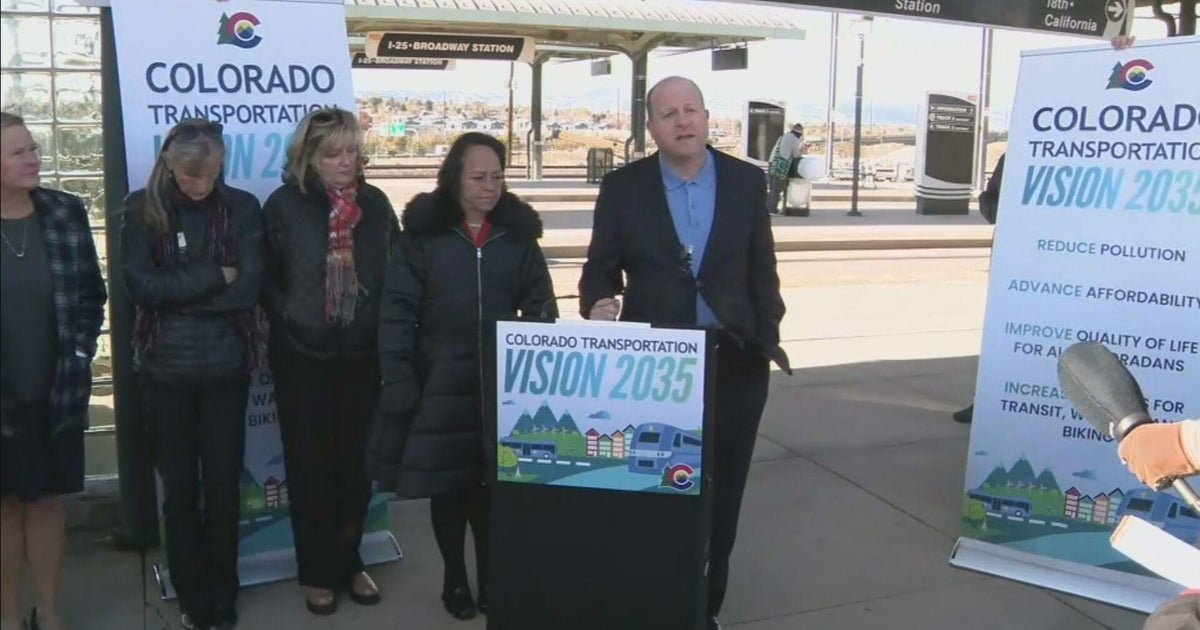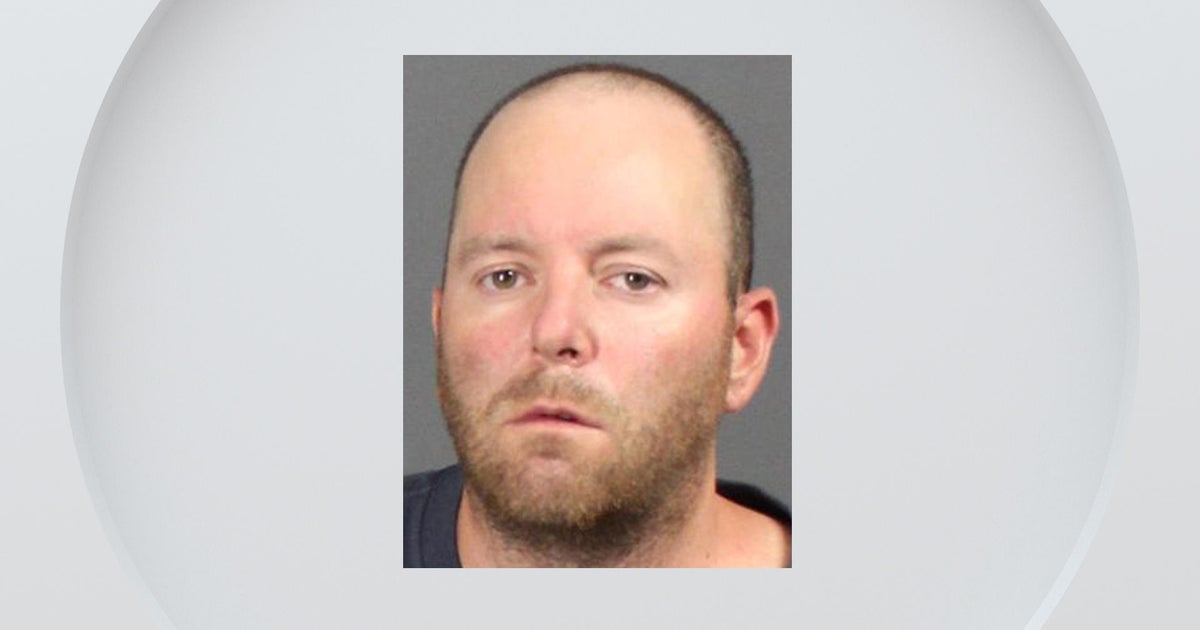'Complete Scam On The U.S. Taxpayer': Feds Criticized Over Wild Horse Removals In Favor Of Livestock
(CBS4) - Wild horse roundups and removals continue to face controversy, with Gov. Jared Polis even calling for a pause of the roundups Thursday, following a weeks-long equine flu outbreak at a holding facility in Cañon City killing more than 140 horses. CBS4 Investigates has found one reason for those roundups is due to private ranchers holding livestock permits on the same public lands where the wild horses are designated to roam free, and there aren't enough resources in those areas for the horses and livestock to coexist — causing the mustangs to lose out.
The Sand Wash Basin in northwestern Colorado is one of just a few designated wild horse herd areas in the state, where wild horses roam free. In 2021, nearly 700 horses were rounded up and removed from that land, and sent to holding facilities to live the remainder of their lives in captivity.
The BLM said at the time there weren't enough resources for the horses.
But just two months later, more than 2,000 domestic sheep were grazing on that same land. Public documents CBS4 obtained show the rancher who owns those sheep signed off on a report to the BLM that the sheep grazed throughout the month of November in a pasture where the wild horses are designated to roam.
The rancher did not respond to calls or emails requesting comment.
Wildlife biologist Erik Molvar says sheep trailing and grazing can be much more degrading to the land than wild horses are.
"When you're trailing sheep up through an area, they are mowing down all the vegetation in their path," Molvar said. "It's almost like a plague of locusts coming across the land and cleaning out every stick of new vegetation and growth."
Molvar is also the Executive Director for the Western Watersheds Project. He says his research into the sage grouse led him to uncover the livestock issues threatening the wild horses.
"Livestock graze 50 to 65% of the annual forage production… and that leaves less than half leftover for wild horses, for elk, for mule deer to have cover for sage grouse, for grasshoppers for jackrabbits," Molvar said. "Then at the end of the day, you still have to have enough growth for that grass plant to survive till the next year, and they're just not surviving, and the reason is, is that the Bureau of Land Management is chronically authorizing a level of livestock grazing that constitutes over grazing there's no question about it."
CBS4 Investigates analyzed livestock grazing permits in three of Colorado's wild horse herd areas: the Sand Wash Basin, West Douglas Creek, and East Douglas Creek.
While there are currently only an estimated 1,510 wild horses left in those three areas, there are 44,089 cattle and sheep allowed to graze on those same lands. That's nearly 30 times more cattle and sheep than horses in designated wild horse lands.
CBS4 Investigates also found the 10 ranchers holding those permits in these three wild horse areas pay the BLM $1.35 per animal unit a month. That's a little more than $57,463.55 total a month total to graze their livestock there, which means if the ranchers use their permits for their full allotted six months out of the year, they will pay the BLM a maximum total of only $344,781.90 a year.
In stark contrast, the BLM spent an estimated $3,469,592 in taxpayer money to round up and care for horses in Colorado last year. This year, the BLM will spend another estimated $3,308,250 to conduct a round up in East Douglas, and care for the horses at a short term holding facility in Cañon City.
"I think that the BLM's wild horse and burro program is a complete scam on the U.S. taxpayer," Molvar said, "It's a tremendous drain on the federal coffers; all to have more livestock put back on western public lands where the taxpayer is getting very little return on the damage that's being done."
CBS4 Investigates' public records analysis found the ranchers receive a decent deal. The $1.35 per cow a month charge from the BLM is the same as it was in the 1980s, with no adjustment for inflation, and it would cost a rancher up to $2.80 a day to feed a cow with hay.
The livestock grazing permits last for 10 years at a time, and many ranchers have held them for several decades.
Through a public records analysis, CBS4 Investigates found all but one of the permits in the Sand Wash, East Douglas, and West Douglas herd areas were re-approved within the last 10 years without an environmental assessment of the impacts the cattle and sheep would have on the land.
That's totally legal through a 2015 law aimed to keep ranchers on course.
Molvar says the use of that law is not unique to Colorado.
"That means you have no hard look at the environmental impacts, you have no public participation," Molvar said. "We found that nearly 70% of the livestock grazing permits across the west that are inside a wild horse herd management area are being reauthorized under this right."
Ranchers Say Properly Managed Livestock Grazing Can Be Beneficial For Public Lands
CBS4 Investigates asked a BLM representative if the agency is favoring ranchers over the horses.
"It's not a livestock grazing versus wild horse and burro issue out there," said John Neill with the BLM. "If the forage is not there due to drought, livestock operators are not going to be able to turnout full numbers, or at all, depending on range conditions. Horses are still going to be out there. Even during drought situations, horses are still going to be out there, but there's not going to be enough available forage for to maintain those animals in a healthy condition either. So, they have to be removed too, in order for BLM to be good stewards of the range; that is our main focus, is to have sustainable resources, for years to come."
Ranchers agree.
Deirdre Macnab is a co-owner of the 4M Ranch in Meeker, Colo., which holds a grazing permit on a chunk of land in the East Douglas herd area.
She says if the land isn't suitable, she won't put her cows out there to graze, and she says the BLM meets with her once a year to make sure her cows are not overgrazing. She says last year she only used about 25% of her grazing permit in the East Douglas area, because the horses had degraded the land too much.
"They pretty much had eaten everything, and it was down to the dust, so that we were not able to use those heavily, heavily used areas by the mustangs," Macnab said.
She says her ranch has been recognized for regenerative agriculture techniques, which are more climate-friendly in the face of persistent drought and warmer temperatures, saying it's important for her to help manage and protect the land, so it can be used for years down the road.
"It's just going back really to nature, and it emulates the way the wild herds would graze," Macnab said. "They'll take the best top parts and they'll move on to the next section… we use electric fencing to always keep the animals on high fresh grass. So, they're moving pretty much constantly, just like they would in the wild, and isn't it a miracle, moving the cows like nature really helps create the best soil and the best ecosystem."
This summer, the BLM plans to remove 750 horses from East Douglas, a move Macnab says is critical.
"I think 100% think it is necessary and frankly, I wish they would do it earlier, because we have had some rain which gives this range a chance to make it, and I really do worry as I drive around," Macnab said. "We're very appreciative that the BLM has forged ahead with this plan, and we support it, absolutely, 100% we think it's in the best interest of the range, and frankly, for the horses as well."
The BLM says it's updating its policies for livestock grazing permits in response to growing climate change threats, saying it plans to provide "increased flexibilities for grazing permits" to support conservation, and across several landscapes, the agency is implementing the virtual fencing technique that Macnab uses, saying livestock can be used to "selectively remove invasive annual grass early in the growing season to reduce competition perennial grasses," and the BLM expects "this practice to promote perennial seeding," saying, "prescribed livestock grazing is also being used to create fire fuel breaks."
But Molvar is pushing for legislative reforms that would allow environmentalists to buy out grazing permits, so livestock grazing activities could decrease more significantly.
"Livestock grazing is probably the most serious ecological impact on western public lands for the vast majority of the lands," Molvar said. "What we need is legislation that allows the voluntary buyout of grazing permits, and then their retirement permanently, so that the conservation buyers can know that what they're buying is going to stick, and we're going to have the ecological rebound that happens when you take off the cattle and sheep for long periods of years."





